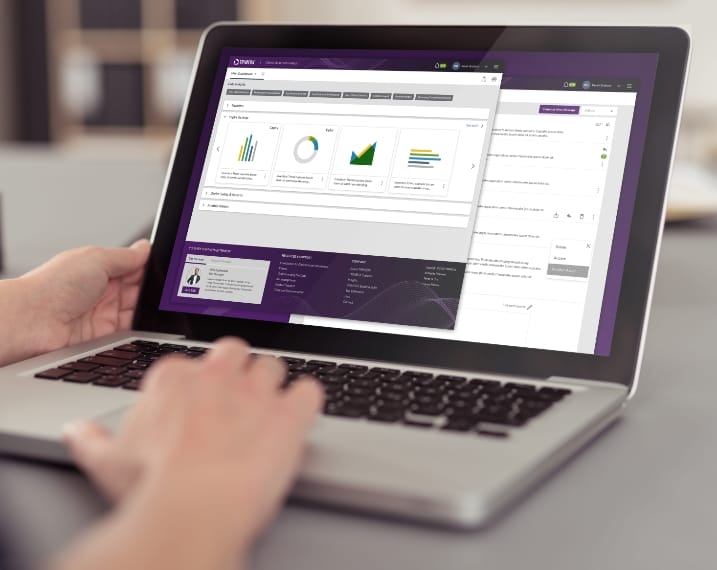We often hear from our clients that they are looking to cut operational expenses, improve their capital planning processes, or reduce their cybersecurity risk, but they don’t know where to start.
Most health systems have a mountain of data at their fingertips, some of it is useful, but a lot of it is just noise. The challenge is to aggregate these multiple disparate data points into one synthesized dataset that can be leveraged to support strategic decision-making.
Increasingly, intelligent informatics platforms that aggregate clinical asset data have become powerful analytics tools for health systems to uncover hidden opportunities for savings and organizational improvement. The first step in harnessing the power of your clinical asset data is to understand the value of one central source of truth when it comes to gaining visibility to your full medical device inventory.
Move beyond one-dimensional decision-making
Many health systems lack a standardized process for clinical asset management and capital planning. Equipment replacement decisions are often made using one of two methods: first come, first served or squeaky wheel gets the grease. Both methods fail to be data-backed or strategic, which could eventually lead to overspending on unnecessary equipment or frequent emergency purchase requests. With an analytics platform that provides a single source of truth for clinical asset inventory, the entire capital planning and budgeting process can be streamlined and objective to support strategic equipment purchase decisions.
A health system looking to create a multi-year capital plan with disconnected streams of data may rely solely on Depreciable Life or Equipment Downtime as their key inputs to decide when to replace a device, but they are failing to consider many other data points that could impact replacement decisions.
Perhaps Depreciable Life isn’t as valuable a data point when compared to the average life of the existing install base. And maybe the downtime for a device may seem high, but it may be lower than average for that device type, indicating the device may not need to be replaced yet.
Additional data sets that could impact replacement decisions include parts availability, necessary upgrades to protect the cybersecurity of network-connected devices, or how much the device is actually used and if it should be replaced or simply retired.
An informatics platform that is able to draw insights from multiple health systems, may even be able to provide national benchmarks for these data points, helping to forecast how long a device is expected to last, as well as recommended device quantities and inventory trends.
With a robust informatics platform that integrates all data into a comprehensive set, decisions can be made on multiple dimensions of the data to help save health systems time and money wasted on superfluous spending.
One dataset for all your clinical asset needs
The proliferation of data that health systems generate and disseminate to different applications and users is simply staggering. Each generation and transmission of data creates another potential for error, misinterpretation or misuse. Having an informatics platform puts all your useful data in one place, with turnkey usability and accessibility to a wide variety of stakeholders. Organizational alignment on key datasets helps health systems avoid costly errors in data mismanagement and shift the conversation from potential discrepancies in data sources, to what strategic decisions can be made from the insights uncovered.
Continuously optimize and improve
Disconnected data can take time and energy to aggregate, interpret and analyze to support strategic decision making. If a health system wants to make strategic decisions that are based on objective data, lengthy delays in acquiring and analyzing data can lead to lost performance, lost competitiveness and potentially lost income.
An informatics platform can help decrease the lead time for strategic decision-making by constantly keeping health systems abreast of their ever-changing data landscape. For example, an informatics platform that tracks device utilization may reveal that certain devices are trending much higher month over month. This could indicate shifts in patient population, changes in reimbursement structures, or perhaps another provider in the area is discontinuing a service offering. In these instances, it may make sense to add additional devices to meet an increase in patient demand and maximize revenue opportunities. If the month-to-month change is similar to the trend in the same period last year, it could just be an expected seasonal surge, and the appropriate action might be to expand the rental fleet for the limited duration of the increase in equipment demand.
Realign resources to value-add activities
Manual data analysis can be very cumbersome and time-consuming, where 80% of the effort is collection and clean up, and 20% of the effort is generating actionable insights. Without the right tools in place, expensive human resources are needed to perform repetitive data collection and cleanup tasks.
With an informatics platform that takes care of the data, you can free up valuable resources to tackle more value-add initiatives. For instance, a health system may want to evaluate how to consolidate vendors for specific device categories to reduce expenses. With a solid informatics platform that organizes data into intuitive and action-oriented dashboards, data analysis can begin immediately without needing to search through disparate applications, interview service line leaders or take a physical inventory.
The integration of an informatics platform into your health system may feel like a daunting task, but the value associated with the use of these platforms is financially and operationally significant. As trends in health care continue to evolve, health systems will continue to face difficult choices and challenges when considering the financial health of their organization. Investing the time and energy into an informatics platform—and developing a solid working understanding of the use and benefits of such systems—will help position health systems to quickly respond to new challenges and demands with an eye towards a successful future
